Resources
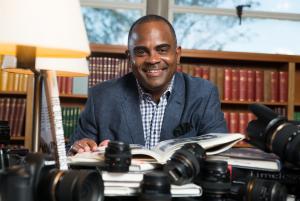
[caption id="" align="aligncenter" width="562"] Egypt https://www.flickr.com/photos/ralphwatkins47/43570551171/in/album-72157669384150857/[/caption] What is the promise of documentaries for teaching and changing the world? Is the documentary the new pedagogical model for everyday classrooms? Is the professor of tomorrow not a lecturer or one who uses the Socratic method, forums, discussion boards, and blogs, but rather are they documentarians? Is the professor of the “now “ one who makes their own documentaries as content for their classes? Is this the game changer? Nick Fraser, in his book Say What Happened: A Story of Documentaries says, “. . . docs have morphed into contemporary essays, becoming a form whereby we get to experience highly provisional stabs at reality, but, far more than fictions, which are usually finished and fixed in their own reality, they are transformed by it. . . . . The best docs celebrate a sense of the accidental. And they matter. Like unknowable bits of the universe, they come into existence when a collision occurs.”[1] Fraser argues in his book that documentaries matter, they change the way we see and engage the world. Documentaries educate us, transform us, and challenge us. Fraser argues that the documentary is the new long form essay, it is what people are watching as they read. We are no longer a culture that is rooted solely in the literate and oral tradition, but a new tradition has emerged and it is the documentary as reliable scholarly source. If Fraser is right, and I believe he is, then how does this new reality expand our opportunities to teach in ways that are truly transformative and liberating? In my Evangelism and Social Justice course I assigned Michelle Alexander’s book The New Jim Crow: Mass Incarceration in the Age of Colorblindness along with Ava DuVernay’s, Oscar nominated documentary, 13th: From Slavery to Criminal with One Amendment and to my surprise this pairing was a game changers.[2] The students got it because they read, they saw, they felt it, and our conversation was transformative. The students were able to weave the two forms of scholarship together. In this class, we were wrestling with the fact that God calls God’s church to spread the gospel and that gospel is one of justice. God is on the side of the oppressed and God calls us to set the captives free. God calls us to see injustice, call it out and address it by correcting it. We spread the gospel by being the gospel. My students got it. One of my students said to me, “I finally get what Black theology is all about. I get it and I have to do something. Thank you so much for assigning the documentary. I see it now.” When she said, “I see it now!” this was eye opening for me (pun intended). It was the wedding of these two, the written word and the visual demonstration of that word, that help my students see. My students are used to watching Netflix, all of my students had a subscription or access to someone’s subscription and this viewing came natural to them. They live in the visual world and I have found that documentaries, like books, are a part of their scholarly diet. Why not feed this appetite? Do documentaries really make a difference? Can they change the way we see the world and then make us act on behalf of justice? Let me cite one case as example of just how powerful documentaries can be. The Fall 2019 edition of The ARTnews reported, “Agnes Gund believes in giving her art away, with donations of hundreds of works from her collection to the Museum of Modern Art spanning decades and others to the many institutions she has supported. But the 81-year-old philanthropist thought she could achieve more by selling a treasured painting after seeing 13th (Ava DuVernay’s,13th: From Slavery to Criminal with One Amendment). Feeling a call to action, Gund choose to sell her favorite holding . . . for $165 million to billionaire investor Steve Cohen, after refusing his overtures for years. She then used $100 million of the proceeds from the sale in 2017 to launch the Art for Justice Fund, a partnership with the Ford Foundation and Rockefeller Philanthropy Advisors currently working against the scourge of mass incarceration through concrete and poetic means.”[3] Agnes Gund’s worldview was changed by engaging the work of Ava DuVernay. Gund saw and she acted! Can we get our students to see and act? Can we employ the use of documentaries in our classes in similar ways we have employed readings in the pass? Can we make our own documentaries and have them replace our lectures? What does it take to make your own documentary? All it takes is a camera, editing software, and our no-permissions-asking selves to just go and do it. In my African Roots of Black Theology class, I created a two-part documentary to start the class. The students engage my asking the question in the context that gave rise to the question. It is a new and more visceral way for them to engage in a new form of contextual visual education. My students got to travel with me as I traveled through Egypt. I used the daily vlog as way to tell the story, share my questions, pondering and musings. The students go with me to where my story begins and it begins in Africa. I also created photo albums for all major stops along my journey so that students could pause and admire the still images in conversation with the moving images. I offer these examples as a testimony of my first attempts and I look forward to seeing yours as we ask what are the now / next in pedagogical practices? Sample Documentaries: Vlog Style [su_vimeo url="https://vimeo.com/355109032" title="Part #1: Out of Egypt"] Part #1: Out of Egypt I’ve Called My Son: A Son’s Journey Black to Africa (https://vimeo.com/355109032) [su_vimeo url="https://vimeo.com/355118012" title="Part #2: Out of Egypt Final Cut"] Part #2: Out of Egypt Final Cut ) Portraits of Egypt https://www.flickr.com/photos/ralphwatkins47/albums/72157669384150857 Giza Pyramids https://www.flickr.com/photos/ralphwatkins47/albums/72157693534362690 Sakkara, Step, Red & Bent Pyramid https://www.flickr.com/photos/ralphwatkins47/albums/72157697707740291 The Cairo Museum https://www.flickr.com/photos/ralphwatkins47/albums/72157696165977282 The Temple of Aset https://www.flickr.com/photos/ralphwatkins47/albums/72157698917086034 Edfu and Komombo https://www.flickr.com/photos/ralphwatkins47/albums/72157699345621995 Luxor https://www.flickr.com/photos/ralphwatkins47/albums/72157669383738737 Karnak https://www.flickr.com/photos/ralphwatkins47/albums/72157698915679014 East Bank Temples https://www.flickr.com/photos/ralphwatkins47/albums/72157671458282618 Denderah https://www.flickr.com/photos/ralphwatkins47/albums/72157696165292492 Abu Simbel https://www.flickr.com/photos/ralphwatkins47/albums/72157697695476081 References [1] Fraser, Nick. Say What Happened: A Story of Documentaries. Faber & Faber; London, 2019. p. 28. [2] Alexander, Michelle. The New Jim Crow: Mass Incarceration in the Age of Colorblindness. The New Press; NY, 2012. DuVernay, Ava. 13th: From Slavery to Criminal with One Amendment. Netflix; 2016. [3]Sheets, Hilarie M.. “Justice League: How Agnes Gund’s $165 Million sale of a beloved painting helped get others to join the fight against mass incarceration.” In The ARTnews Fall 2019 VOL. 118, NO. 3, p. 75-76.
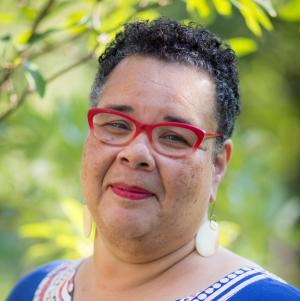
“Toto, we’re not in Kansas anymore.” So many of our students have a “Dorothy” experience when they enter theological and religious education. Our classrooms are not what they have had previous experience of. Our classrooms are not the local church, not Bible college, not the family reunion, not church camp, not church conference, not undergraduate school, not job site; not anything like they have ever had to traverse. The location of our adult classrooms, for many students, is unique. And, once the degree is received, it will be a space to which they never return. Our classrooms, for so many, are the most foreign space they have ever ventured into. So many students are out of their comfort zones. They are away from home. While our teaching goals are rarely to comfort our students, teaching students who are upset, distressed, and skittish does not make for good teaching or good learning. Like many schools, we have a growing number of commuter students. My school draws from the boroughs of New York City, Jersey City, and Newark. While those of us who are familiar with living in the suburbs do not think of it as a “dangerous” space, those brothers and sisters who call the city home can find thick forests and dimly lit walking trails to be a problem. One night after class I was walking home. Home was on the other side of campus. Between the building where I taught and home was the baseball field, then an expanse of unlit trails through the campus arboretum. I had walked this route at night for many years with no fear or trepidation. After class, I passed a student getting into his car. Edgar (not his real name) was headed back to the City. We quickly exchanged after-class-pleasantries, then I resumed my walk toward the woods. Edgar called out to me in a concerned tone, “Doc, where you headed?!” I turned around and told him I was headed home and said, “Good night.” Edgar got in his car, raced around the parking lot until he caught up to me. He rolled down his car window and in a distressed tone called me to his car. I walked over–not sure what was wrong. He asked if I was going to walk through the woods–in the dark, alone. I said yes. He asked, “Please let me drive you home.” Feeling Edgar’s concern for me, I got in the car. During our five-minute drive, he expressed his anxiety for being in “the country.” I told him I had lived here for many years and felt comfortable walking, even in the dark, in spaces I had come to know. He told me that if I needed a ride home after class for the rest of the semester that he would gladly drive me home. Before this experience, I had considered that students might be uncomfortable with new ideas or new people or new values presented in our classrooms. I had not previously considered that students might be uncomfortable with being “in the country”–away from the city–uncomfortable in the terrain where they did not know the rules and the pathways were, literally, unlit. Suppose an obstacle to good teaching is the literal space we occupy? What if we have city people who have ventured to the country, or country people who have ventured to the city, and are fearful of this unfamiliar space? In either regard we have students who are distracted by their uncertain safety, worried if they will get back home safely and without incident. What does it mean to teach with this kind of discomfort in the room? Dorothy, of The Wizard of Oz, turned her situation into a quest. She constructed a journey which eventuated in her return home. So many of our students are not on a quest; they simply want to get a degree and the degree-giving-place is located in a place that is very foreign, a long way from home, but commutable. They commute to the foreign place and then return home each week. I suspect some students resign themselves to being uncomfortable for the duration of their education. Complicating the discomfort and anxieties of our students, another dimension to their discomfort is the experience of possibility. Author bell hooks said, “The classroom remains the most radical space of possibility in the academy.” So many students resist encounters with “radical spaces of possibility” preferring instead spaces which are reliable and previously known. My first teaching challenge was at age thirteen when I taught elementary-aged children in my church’s summer day camp. Snack time was a favorite moment in the day’s schedule. The teachers would gather all the children in one room and provide fruit as a snack. Ralph, age 10, never ate his fruit snack. He would complain and ask for cookies or chips. One day I sat with Ralph who was pouting. I asked, in earnest, why he would not eat the fruit. He said, “Because you don’t know what you’re going to get.” I told him that I did not understand. Ralph said, “If you eat an orange you don’t know if it’s gonna be sweet or sour. It might be juicy or it might be nasty. But if you eat an Oreo – they all taste the same. You know what you’re gonna get.” Many of our students find our classrooms too risky with possibility. They simply want to know, like Ralph, that they are going to get what they previously know, what they previously experience as dependable. When we say learning will be discovery, newness, encounter with the unfamiliar, even transformative–the Ralphs in our classrooms recoil. They do not want to be transformed. Some of the resistance and anxiety is that lots of people do not have an adventuresome spirit. Or more to the point, students will say that in their busyness they do not have time for an adventure. The thought of new ideas is worrisome, even burdensome, rather than motivational or inspirational. Students’ discomfort about risking the randomness of learning is anxiety producing and can make our classrooms woeful. The spring semester is upon us and my syllabus is prepared. Even so, I do not have strategies to relieve the many real discomforts, anxieties, and fears of my students. Edgars and Ralphs will likely be in my course as well as a few new kinds of fears I have yet to catalogue. By now I have enough experience to know that much learning can happen even when fears, uncertainties, and reservations are not calmed or eased. Beyond that, I know I need to be a non-anxious presence for the sake of all of my students and me.
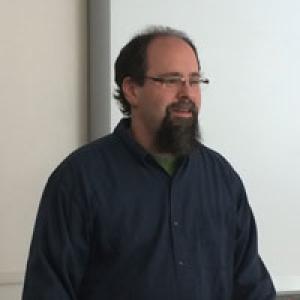
Every time I walk into a classroom or workshop for the first time, I hear the voices of elders in the long, Black-led struggle for justice pressing the questions: “How are you going to bring people into the movement? How are you going to plant the seeds and bring forth a revolution of values?” My thoughts are always about what it means to model the just peace of the society that is and has yet to be. The orientation I bring to the classroom or workshop space is one of religion and nonviolent social change focused in civic engagement and social action. The tasks and challenges we face today in the religious studies and peace studies classrooms are not unlike those faced over the past several decades. Rev. Dr. Martin Luther King, Jr. gave his “Breaking the Silence: Beyond Vietnam” sermon 50 years ago. In the sermon King called us to a “revolution of values.”[1] The revolution of values is a move away from a thing-oriented society toward a human-oriented society. It helps to create a society where everyone has their needs met and no one is oppressed. King was speaking out against the value the United States placed on the evils of racism, materialism, and militarism. According to elder Grace Lee Boggs, a revolution of values and building up the Beloved Community, are "about redefining our relationships with one another, to the Earth and to the world; about creating a new society in the places and spaces left vacant by the disintegration of the old; about hope, not despair; about saying yes to life and no to war; about finding the courage to love and care for the peoples of the world as we love and care for our own families.”[2] The recent wave of political and social violence against Black and Brown people, women, queer, non-gender conforming people, and religious minorities is not new. It is just more overt. The risks of talking about religion, politics, and the politics of religion in the classroom are high. We see friends and colleagues being labeled “dangerous.” Yet, our tasks as teachers are to critique and improve society. We do the emotional and complicated work of instilling in our students' religious literacy, a political consciousness, and a sense of calling. A large part of moving students to political consciousness and calling is the idea that human beings are all connected to one another, to the past, to the ancestors, and to the future. In other words, becoming politically conscious is to move toward the understanding that who I am is related to who you are. Simultaneously, the move toward calling presses the idea that what I do is related to social responsibility. Ultimately, what I believe about and how I live has consequences for others. In my courses, religious literacy becomes a tool for moving students into a new political consciousness. Students learn about the beliefs and practices of a variety of religious traditions and the political implications of those traditions. Along the way, students are given the opportunity to reflect on their own beliefs and practices. The pedagogical tools I have found useful in the endeavor to create a revolution of values and a new political consciousness are: Be authentic and present. I try to think of my teaching in terms of a pedagogy of relationship and community. I spend time during the first weeks of a semester allowing students to get to know one another. I treat classroom spaces as community spaces. As the professor, this means being vulnerable and transparent. Students know when a teacher is not being real. I cannot ask students to share their personal stories and experiences without being willing to do so as is appropriate. Make it real. I ask students to reflect on why religious literacy and political consciousness are helpful in their work, their relationships, their vocation, and in their civic engagement. If students can make the material relevant to themselves they are more likely to take it with seriousness. Making it real means exposing students to practitioners and the stories of real people. Teachers having their limits and being transparent about those limits allows students to see do likewise. Be clear about the end goal. If the point is to move students toward a revolution of values, then we must develop a pedagogy of transformation and hope. Too often religious and political discourse is about what we are against. In the words of elder Vincent Harding, “No matter what form education may take . . . I am convinced that one of its most important responsibilities is to nurture the realization that we can change our lives for the better, that another creative, more democratic way of life is possible, that the seeds of such a new way are already alive within us, needing to be nurtured.”[3] In these times the stakes are very high. How are we bringing people into the movement? How are we planning the seeds for a revolution of values? What are working toward? [1] King, Jr., Martin Luther, “Beyond Vietnam,” Available online at https://kinginstitute.stanford.edu/king-papers/documents/beyond-vietnam. Accessed March 8, 2016. [2] Boggs, Grace Lee. “The Beloved Community of Martin Luther King.” May 20, 2004. Yes. http://www.yesmagazine.org/issues/a-conspiracy-of-hope/the-beloved-community-of-martin-luther-king. Accessed August 14, 2014. [3] Harding, Vincent, and Daisaku Ikeda. America Will Be!: Conversations on Hope, Freedom, and Democracy. 2013, 174.
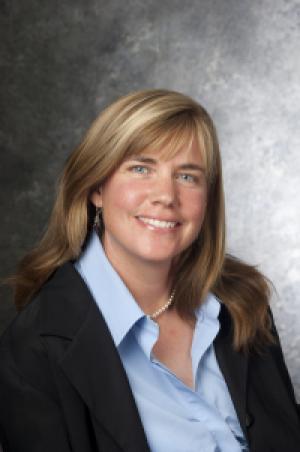
I am a cyclist. I ride a hybrid commuter bike to work most days and have a road bike that has taken me up mountain passes and on to country roads outside of Dallas where views of fields and livestock replace the asphalt jungles of the Metroplex. I picked up cycling almost a decade ago when it became clear that I needed some kind of response to the combined stresses of pre-tenure professional life and young children at home. I got on the bike for outside time, physical challenge, and personal space. I’ve stayed on the bike for all of these reasons, and also for what time on the bike has taught me about attentiveness, mindfulness, thinking spaces, and more recently, about wobble: those moments when things slow down, or haven’t quite started up; when direction, volition, and commitment are in play. In cycling, wobble happens when mounting, dismounting or moving slower than 2 miles per hour, often during a turn. As things go, this is also when it happens in classrooms. When conversations aren’t strictly guided, when listening replaces lecture, when a set authority structure is open to flux, intellectual patterns can come a little out of balance and preconceived ideas can change. Put another way, transformative learning can occur. Without the wobble, feet firmly on the ground, we can never get on the bike and ride. My interest in wobble stems from some conversations about diversity and intellectual humility I’ve been having with colleagues from various places and disciplines, and also from a recent workshop for faculty and graduate students here at Southern Methodist University on conflict and conversation in religious studies classroom spaces (thanks to Wabash for funding this with a small grant). The workshop focused on understanding why contentious issues can be difficult to talk about, and also offered concrete methods for facilitating useful conversations across difference. John Sarrouf, an experienced facilitator and Director of Strategic Partnerships at Essential Partners, led that workshop for us. John was also kind enough to come and speak to my undergraduate class about the work he does. It was in that encounter that I saw wobble in action. John greeted the class and then asked if they were talking about the upcoming presidential election. My otherwise talkative, engaged, and engaging students shrunk at the very suggestion. Shoulders hunched, faces turned to their desks, they shook their heads. They were thrown off balance, visibly uncomfortable, almost at a standstill. Then, John asked what it would take to be able to have those conversations. Under what conditions could they speak? Their heads came up, they made thoughtful suggestions, and by the end of John’s 10 minute time, they had recalled productive discussions around Black Lives Matter, religious differences, and their experiences in our class. They had turned an intellectual corner and were up and riding (thinking) again. In an online discussion post that followed, one student mentioned a change in his thinking in response to a suggestion John made about talking to understand rather than to persuade. Something in the wobble allowed him to hear, consider, and embrace a suggestion. He learned something. As in mounting and dismounting a bicycle, the wobble needs to be controlled. Too much and forward momentum turns into a crash, too little and we never get that second foot off the ground. Now that I am attentive to wobble, though, and have learned to use it by letting silence happen in discussions — by getting mindfully out of the way, or by not shying away from controversy when it arises — I have come to recognize its real potential. Or more accurately, I can see it for what it is. Before I saw discomfort or disengagement, things I wanted to minimize. Now I am more likely to see the beginning of forward momentum. I see the beginning of transformative, interesting thought, even around topics as challenging as religion. I hope my students can see the same.

The up-tick of media covered violence in the USA, as well as the reports of violence from around the world, causes me to pause. While I believe that experiencing the pain, suffering, and uncertainty of the world is calling us to become a nation of compassion, forgiveness, respect and equity, I am also afraid. The Golden Rule or the rule of reciprocity is pursuing us with gusto and I am fatigued. The survival of the planet depends on our willingness to examine ourselves and change. It is mid-summer, and my attentions have turned toward preparing for fall and spring courses. Given the backdrop of terrorism and violence in the world – I feel tentative and uprooted. It is easy to slip into the narrative of “an eye for an eye.” Or fall down the slippery slope of thinking that the suffering of some “expendable” populations is acceptable if others can live well as a result- just collateral damage for the greater cause of democratized capitalism. The anxiety in the nation is palpable. The media identifies the acts of violence and hatred by their geographic locations; Nice, France; Orlando; Charlotte; Ferguson (to name a scant few). We are reeling from news coverage which includes cell phone videos of neighbors and family members who are shot, mauled, assaulted, maimed and murdered. Conversations are polarized about police corruption and arrogance. Colleagues, friends, and politicians are writing public letters in response; public manifestos in protest; public statements of dismay and clarion calls for change. I am appreciative that each literary piece is like a musical note in the score for a new symphony of resistance. In the straining for meaning – comparisons are drawn. Grasping for perspective, people are comparing this 2016 era of violence to the civil rights movement. People are harkening back to the days of blatant assassinations: JFK – 1963, Malcolm X – 1965, King – 1968, Bobby Kennedy – 1968. Others are saying that the flagrant violence dappling the nation is a-day-in-the-life for our brothers and sisters in Israel – or is the everydayness for our brothers and sisters in Beirut and Iraq and Afghanistan. Some people liken the current national violence of 2016 to nights in Watts or Camden or Chicago or Detroit – where nightly gun violence and murder is normal, routine, customary - terrorizing. They use the words of Malcolm X, “… the chickens have come home to roost,” as prophetic finger wagging. The mainstream news routinely including a person who is professing that terrorist attacks cannot change our (U.S.) way of life! The person, usually a white, middle aged, man, proclaims that we must live our lives, keep our habits, and not “let the terrorists win!” I suspect my definition of “terrorists” is more expansive than his. My 88-year-old father now refuses to attend the Saturday matinee for fear of being shot. The most piercing uproar and outcry is for - what to do. Thankfully, the counter-narrative is coming on strong. Organizations like #blacklivesmatter and the Samuel Proctor Conference, led by Dr. Iva Carruthers, are diligently, systemically, and effectively working on the issues of violence, corruption and white supremacy in thoughtful, strategic and transformative ways. These organizations are calling us to empathy, compassion, and justice so we all might live and our babies yet-to-be-born might know safety. As a Drew faculty person, I am thankful for Drew graduates who are on the front lines of the 2016 fight, the 2016 journey toward compassion. An exemplar from Drew is the Rev. Dr. William Barber, II, the President of the North Carolina State Conference of the NAACP and the National NAACP Chair of the Legislative Political Action Committee. When I think of Bill and his tireless work I know I do not teach in vain. Bill’s activism and public theology is shaped, not in spite of his theological education, but by his theological education. With discipline and faith, I tell myself to gather myself – I have to, with intention, keep myself grounded. I force myself to stretch beyond myself. My impulse, like so many of us, given the events of violence across the world, is TO DO SOMETHING! When I quiet myself and take a breath I re-purpose myself to commit to teach as a service of justice. I am convinced we must marshal our smartnesses/our best minds, our most creative spirits, our best innovators to solve the problems of violence, racism, militarism – which, if unchecked, will kill us. My fears are allayed when I think of gathering with my students in the fall semester. Embedded in my course content (explicitly or implicitly) is my yearning for them to be change agents. I believe to teach well is to instill in students the ability to discern work which is meaningful, work which is transformative, work which yields compassion and empathy for the stranger. I am looking forward to challenging my students to exercise and hone their abilities to think deeply, to think imaginatively, and to think with their hearts about new ways of being in the world. The world will become more compassionate when we teach and learn that we all are God’s children – no exceptions. Obscure classrooms in seminaries are full of people who will partner with and collaborate with Bill Barber and the others. My job is to train folks in such a way that they are not seduced nor intoxicated by the trivial, and who can engage the deeper issues of alienation, xenophobia, and hatred which are our plague. The old moorings are gone and the new ones are wrenching and cricking into existence. My job is to assist my students in doing work that is worth doing – the work of justice and compassion.
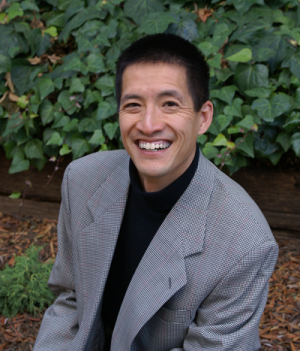
Tat-siong Benny Liew Class of 1956 Professor in New Testament Studies College of the Holy Cross [O]ne thing above all—to step to one side, to leave … spare moments, to grow silent, to become slow—the leisurely art of the goldsmith applied to language: an art which must carry out slow

Tat-siong Benny Liew Class of 1956 Professor in New Testament Studies College of the Holy Cross Five years ago, Yale law professor Amy Chua published a controversial book, Battle Hymn of the Tiger Mother. According to Chua, there is a basic difference in parenting practices between those of Asian (particularly.

Nancy Lynne Westfield Associate Professor of Religious Education Drew Theological School So central to my identity is teaching that when I think of the highest honor, the highest appreciation – I think of my gratitude for those who have liberated me through their teaching. I aspire, then, to instill in

Tat-siong Benny Liew Class of 1956 Professor in New Testament Studies College of the Holy Cross Recent studies suggest that African American students, despite the opportunity to attend college, tend not to major in disciplines that are linked to a high income generating future, such as a STEM field; instead,.

Nancy Lynne Westfield Associate Professor of Religious Education Drew Theological School The gaze. eager sparkle – happy batting of lashes – signaling “…go!”; cautious, diverted looks – at the floor or just “away”— ….no!-- down caste/mostly shut eyes, maybe even the downright defiant stare – fixed & cocked….Occasionally the gawk.